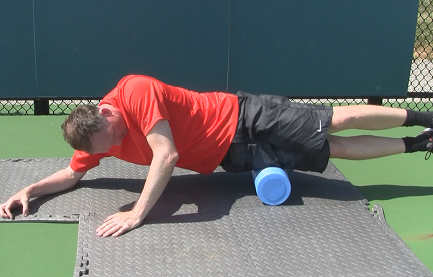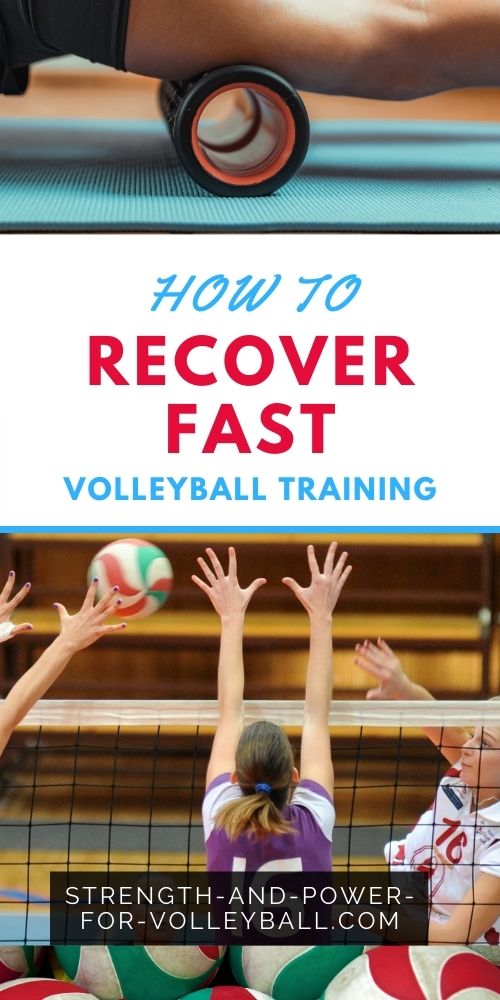- Home
- basic volleyball equipment
- foam roller
Foam Roller Review
The foam roller is a great tool for most competitive athletes, including volleyball players.
Volleyball has turned into a year-round sport and it has become challenging for athletes to recover and perform at the highest level possible.
Some advantages of the foam roller...
- Assist recovery. The roller helps you recover faster for the next practice/tournament. When an athlete engages in repetitive motions (such as spiking a volleyball) during a volleyball tournament, there is a high possibility that the fascial fibers don’t return to their intended pattern. This can lead to muscle “knots, or a restriction in movement. Foam rolling is a lot like stretching. The main goal of rolling is to lengthen and massage muscle. This helps prepare the muscle for a future workout and help the body recover faster.
- Self-massage. The foam roller is a great tool for giving yourself a massage. This is called self soft-tissue mobilization. This is basically massaging the muscles, ligaments and fascia in order to optimize muscle function.
- Decreasing muscle fibrosis (scar tissue). Fascia is the term to describe the connective tissues of the body. Dysfunctional areas of fascia are referred to as knots, ropes, gristle, adhesions, and scar tissue. This is caused by things such as trauma and injury, poor motor patterns, and emotional distress. Releasing these tissues will give us an opportunity to create more efficient movement patterns in the future.
- Decreasing risk of injury. Injury, training, nutrition, and health status, will affect the health and mobility of the fascia. Fascia can become restricted which can lead to adhesions that cause soreness, restricted movement, and the potential for injury.

Foam Rolling the IT band and Quads
How I like to use the foam roller
Personally, I like to use the roller mainly focusing on my legs. Sometimes I will roll on my back. However, if I need work near my spine, I will usually rely on a massage therapist or a chiropractor that is certified in active release techniques (ART).
Here are the areas I like to hit with the foam roller...
- Thighs (Hamstrings and quadriceps)
- IT Band (side of the thigh)
- Groin
- Lower leg (calf and tibialis anterior)
- Buttocks area
Here is the foam roller I recommend.
I like this roller best because it's smaller than other rollers which makes it easier when traveling. Also, some other rollers have asymmetrical trigger points which kind of make it feel like you're rolling on a bed of rocks.
Tips to Maximize Effectiveness of the Foam Roller
- It's important to mention the roller is to be used on soft tissue, not bone.
- I typically don't spend more than one to three minutes of body weight rolling for each area.
- A good rule of thumb is to roll out an area that is tender until it feels less tight and sore.
- Rolling slowly is usually more effective than rolling fast. Be careful not to over do it. One to three minutes per area is typically optimal.
- If certain areas are too painful, then it can be effective to focus on rolling out adjacent and associated areas near the injury area while avoiding the most painful spots.
- Be sure to roll at different angles and postures especially in more lengthened positions.
If you enjoyed these tips and would like to keep it close to you at any time, just save this pin to your Pinterest Volleyball Training Board.
It's also important to understand that being "tight" isn't necessarily a bad thing.
For example, tight hip flexors could be why you're so quick to the ball.
Volleyball is a sport that involves quick explosive movements. Athletes that make quick and explosive movements tend to have shorter muscle fibers in comparison other athletes.
It depends on the type of repetitive movement. Volleyball and tennis are quad dominant sports. This means the athletes of these 2 sports are constantly using the quadricep muscles. So, these athletes will typically have tighter hip flexors than athletes that play other sports.
Generally speaking, the repetitive leg movements of a soccer player (dribble the ball on the inside of the foot) is opposite that of the repetitive leg movements of a ice hockey player.
To perform at a high level, there's an optimal resting length for your muscles.
And you can actually take away from your performance by making muscles longer by stretching. So remember, being "tight" isn't always a bad thing.
